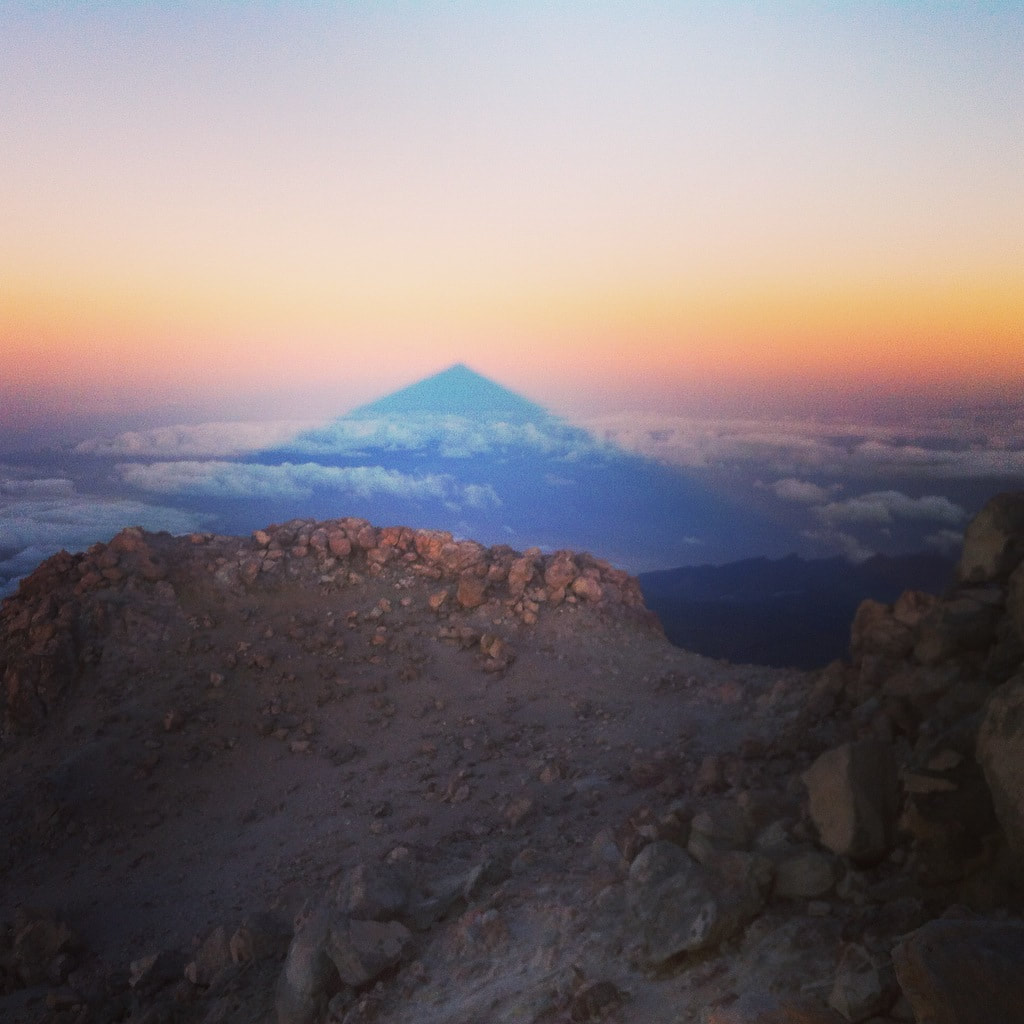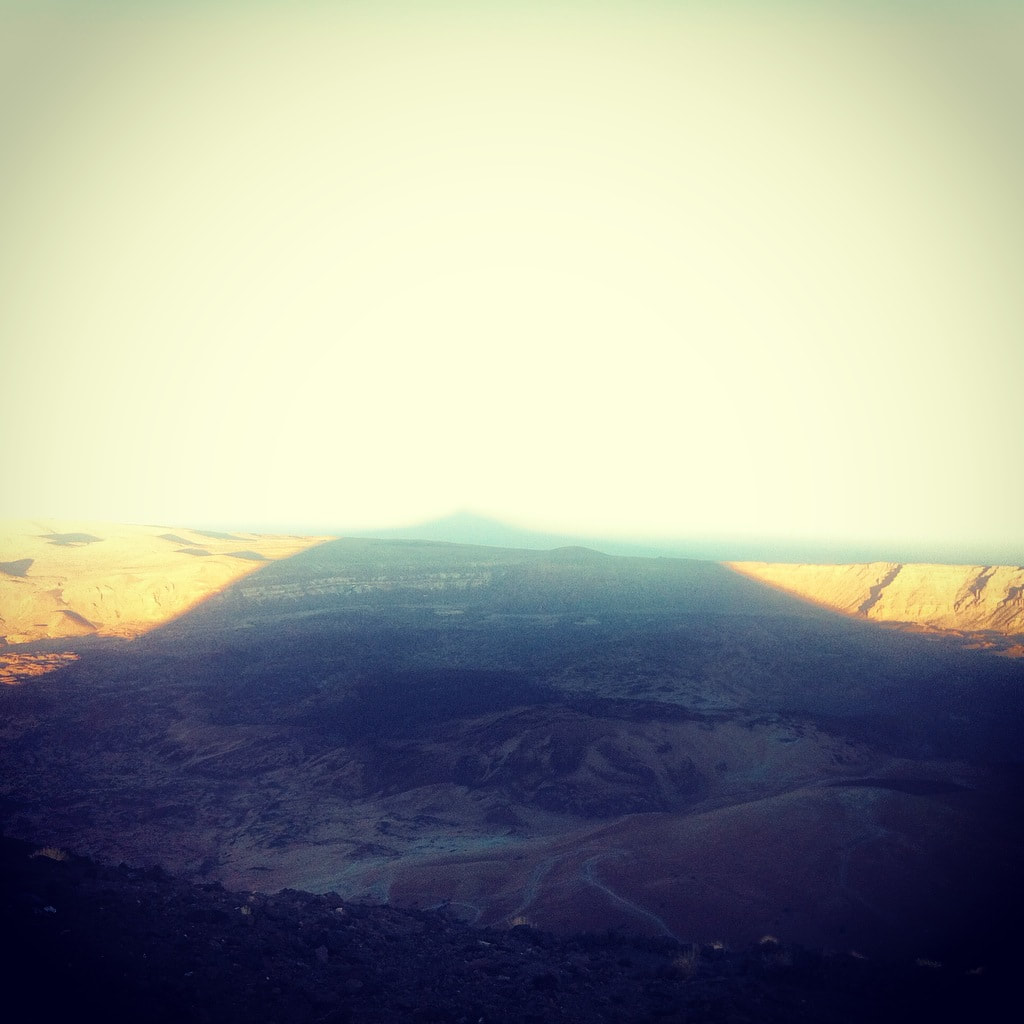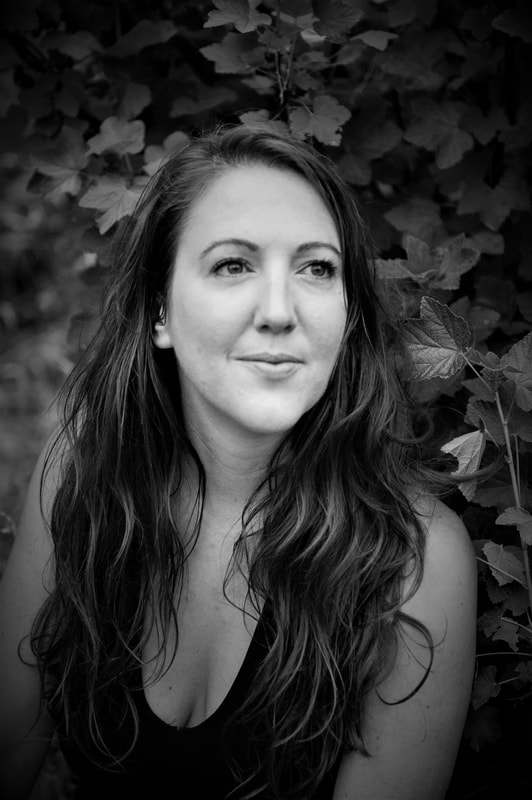|
When you don’t speak a language, you hear how things are said, the energy in a conversation, and notice when people choose to say nothing. This weekend, I climbed Spain’s highest mountain: Mount Teide. I did it with a group of native Spanish speakers from the Canary Islands, Latin America and mainland Spain. As we hiked up the mountain - the patterns, and regularity of certain words changed. When we began: “vamos”; when we walked into the shadow of the mountain it was “frío”; each time we stopped and turned around “bonita”; as we walked out in total darkness at 5am: silence, no one spoke; as we ascended “silueta”, as we reached the crater at dawn and saw the world’s longest shadow stretching over the Atlantic: “la sombra”. A few years ago, I went to FLUPP festival in a favela in Rio and remember noticing how people's conversations felt like they had a temperature: they seemed to bubble and ping and were so full of gusto and vim, compared with the flatness of my own language (where people speak to each other as if they’re not fully awake yet). I love this about languages like Spanish, Portuguese and Italian: how they take off. Everything sounds caffeinated. I feel so tethered, compared to exclamations of ‘a’s and ‘o’s and the rolling engine of ‘r’s. Earlier this year, a poem had risen up in me, dream-like, about Teide Violets - a flower that pretty much only grows on this volcano, on the island of Tenerife, at a specific altitude. It is a small and massive poem to me: about how maternally protective I feel, and heartbroken by the loss and vulnerability of certain species. The poem will be published in the forthcoming Climate Change issue of Magma magazine. In the poem, I walk up the volcano through the night, guided by a man I don’t know. In the Mountain refuge on Saturday evening, a wonderful Venezuelan woman, Aliee, that my friend and I’d met, said: “This is not chance. I have been looking for you.” The whole experience had this feel to me. I found myself living the poem that had come to me three months earlier. I had not planned to climb the mountain, definitely not with a male guide, and had no idea that when you climb Teide, this is how you do it: in the night, in blackness - such blackness that you can’t even see the silhouette of the mountain, where it stops and where the night sky begins. You walk up into galaxies and shooting stars and the smear of the milky way. We were a group of about 20. When I looked up or down and saw the trail and clusters of headlamps along the path I thought we looked like our own constellations. My mother used to say to me as a child that I was made from stardust and this journey felt like us returning ourselves to the heavens. When I re-read Johanna Spyri’s children’s book Heidi this summer, the mountain felt like one of the main characters. So much of the narrative centres on them climbing up and down it like a ladder. Mount Teide felt like our plot. We walked into it. We crossed into its shadow with such relief to finally be out of sun and heat, then turned from it when we reached the Altavista Refuge only to see its sombra across the earth's atmosphere, with Gran Canaria next to it seeming to grow out of clouds. On a clear day you can see every one of the canary islands from Mount Teide and you can see Mount Teide from every one of the islands. Its shadow is so vast, that it is like watching an eclipse. It has a halo around its crater, and drapes like cloth over the surrounding mountain range, ocean and islands. The higher you get up the mountain, the harder it is to make out what is sea and what is sky, unless there are boats; and as you ascend, it becomes impossible to look at anything but where your feet are. There are vents and cracks which your sticks get jammed in, plus a fallen empire of rubble, loose rocks and scree to slip and turn your ankle on. Last year, I went to Iceland. As the plane flew in, I thought the landscape looked traumatised. Teide National Park is the same: an outburst, made by fire and heat, wounded. The earth is black and red and brown - broken and cut and coughed up and turned and spilled. It looks like chaos. There has been no water here to sooth it, as there was in the landscapes I grew up in, that were softened and made slowly by water, carrying and holding the memory of it in their undulations and cupped hands. The making of this place feels abrupt, violent. I can’t say if I felt happy in it. An English poet called Helen Mort has written a brilliant collection about female mountaineers and mountaineering, No Map Could Show Them. As part of the research she hiked in crinoline skirts and petticoats to recreate what some women would have worn. In my group, on the first day, a phenomenal woman, Rossi, climbed the mountain in hotpants, a Glee-style crop top and sideways basketball cap. She was the sun of our group - even in the darkness and tiredness of the second day. She lead at the front for much of the hike, would Facetime her brother, Ivan, at various altitudes (and we’d all wave back at him in his warm house), she sang to us to keep our energy up, had us laughing and taking selfies at every stage, and got a collection together to tip the bus driver on the way back. Another man played R&B very loudly for two hours from his phone, dancing and skipping around each curve of the track, at the rest stops some people would light up and many people chatted on their mobiles as they hiked up until the signal was lost. I loved the lack of reverence and conformity. I had not pictured myself mountaineering with Despacito as my backing track. It felt freeing and unBritish. It reminded me of when I’d go skiing, listening to Bollywood and hip-hop all the way down the slopes. Two of my favourite international poets are mountain women: Bejan Matur and Kutti Revathi. Bejan is a Kurdish poet who was born and brought up on a farm in the mountains of north Turkey. Mountains are so present in her work that even though she left many years ago, they still live in her. The more you confine me, Kutti is a Tamil poet who lives and has the courage of someone who has grown up overcoming the difficulties of height and distance. She lives in mountainous Tamil Nadu in India, runs a feminist literary magazine and explores the landscape and reclaiming of the female body. The first poem I read of hers is called Mulaigal, Breasts and was translated by the late Lakshmi Holmström in the anthology Wild Girls Wicked Words. BREASTS One of the most beautiful books written about how mountains inhabit you, is Nan Shepherd’s The Living Mountain. When I go to watch the deer rutting each autumn in Richmond Park and hear their bellows and horns interlocking (which sound just like the crunch of American football players), I think of her descriptions of the stags jousting to the death in the Cairngorms. There is something that brings us to mountains. Sometimes as healing places, as in Susan Trott's Holy Man trilogy, sometimes as safe spaces, as our ancestors did in the previous ice ages and on migratory routes, and sometimes to prove to ourselves that we can be where we weren’t made to be: where we can walk at the bottom of the ocean floor and step in and out of clouds.
5 Comments
10/8/2019 06:58:25 am
Oh my goodness! an amazing article dude. Thank you However I am experiencing issue with your ruses. Don’t know why Unable to subscribe to it. Is there anyone getting identical ruses problem? Anyone who knows kindly respond. Thnkx
Reply
10/21/2019 05:57:55 pm
This is a scary thing and it is one that I fuels our imagination. I feel like if we think about it, this kind of thing is just part of our culture. We all think that there is a scary shadow that just wants to consume us. Our imaginations are to blame or this, but at the same time, it is still okay. I hope that we all just quit thinking of every single thing as a supernatural entity or thing.
Reply
8/29/2021 01:14:10 am
Staying fit by exercising daily also helps to keep one’s health in proper check. If you are in good health, you can always work to attain more wealth. But if one is not healthy, then wealth is of no importance. Hence, we should adopt and work towards a healthy lifestyle.
Reply
8/29/2021 04:52:42 am
Fashion not only highlights the social history and the needs of person but also the overall cultural aesthetic of the various periods. The evolution of fashion dates back to several hundred years and as our attitude and culture change, fashion comes along with it.
Reply
Leave a Reply. |
Author
Anna Selby is a naturalist and poet. Archives
December 2020
Categories
All
|



 RSS Feed
RSS Feed